Knowing a hen’s health status is essential to achieve production goals. Sick birds cannot develop to their full genetic potential so health programs play a central role in the production schedule.
Healthy hens are disease-free or, at least, can support and deal with the diseases that are present in their environment.
Biosecurity is key to keeping the flock free of pathogen agents or, at least, reducing their presence. Flock immunity is the corner stone that prepares hens to handle the threat of disease. This relates not only to the vaccination program but also to the hen’s physical status.
If hens are inmuno-suppressed due to underfeeding, stress or other reasons (mycotoxins, chemicals) it will be difficult to cope with diseases even if the hens have been vaccinated. Certain avian diseases (such as Salmonella enteritis or Campylobacter) are zoonoses which can spread between birds and humans.
So even if a disease does not directly affect poultry,
it should be included the health program.






A biosecurity program plays a key role in maintaining hens in good health and, there- fore, profitable production. Biosecurity can be defined as all the procedures put in place to prevent pathogens infecting hens and spreading to other poultry farms.
To be effective, a biosecurity program should be implemented in a very practical and structured way. An effective biosecurity program is well-adapted to the production structures and well-understood by all the actors (staff, production managers, external suppliers, veterinarians, general manager etc.) at the farm. If certain actors do not take biosecurity seriously and fail to follow the procedures, the efforts of the others will not be rewarded.
It is essential to apply procedures systematically. Sporadic application of a biosecurity program will not work.
This is the biosecurity related to the farm design and its location of the farm and its surroundings.
Ideally farms should be situated away from:
If these kind of facilities are near to the farm, structural and operational biosecurity should be improved.
If possible, new farms should be constructed in biosecure locations.

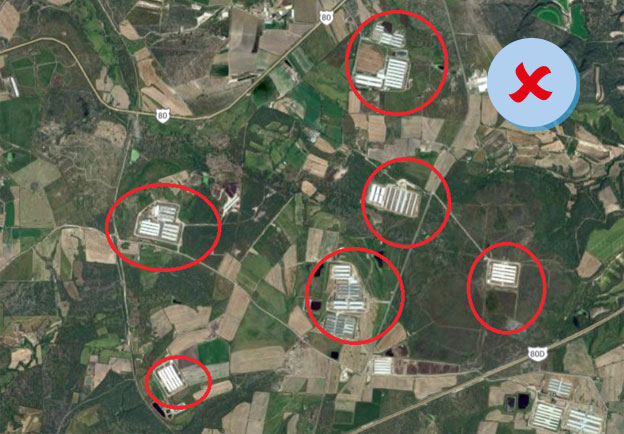
This is the biosecurity related to the physical structures used at the farm to prevent the introduction or spread of diseases.
Important components include:

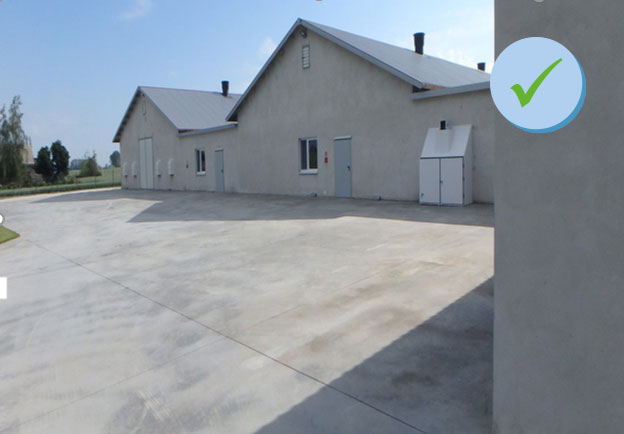
This is the biosecurity related to how work on the farm should be done to prevent the introduction or spread of diseases.
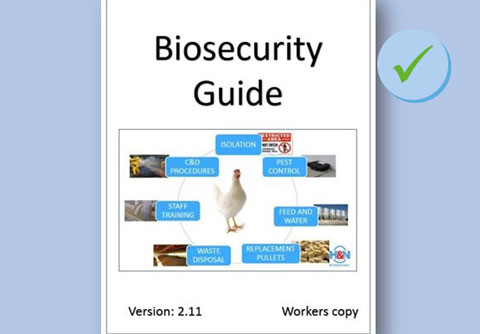

Only essential visits with a clear purpose should be permitted.
All visits/visitors should be considered as a risk for the flock.
A logbook should be available for visitors. All visitors must fill in their name, date of visit,
purpose of visit, last visited farm and vehicle license number.
Visitors coming from another external farm on the same day must not be permitted entry. Visitors from sites of a disease out-break are absolutely forbidden entry. If several company
farms are visited on the same day,
the sequence must be from younger flocks to older ones.
Specific work clothing must be available for staff and visitors.
All material must be disinfected prior to entry to
the farm. This is even more important if the material comes from another farm.
Vehicles must be disinfected prior to their entry to the farm. If vehicle access to the
farm is not a necessity, preferably park vehicles outside the farm.

Closed gate with biosecurity signs
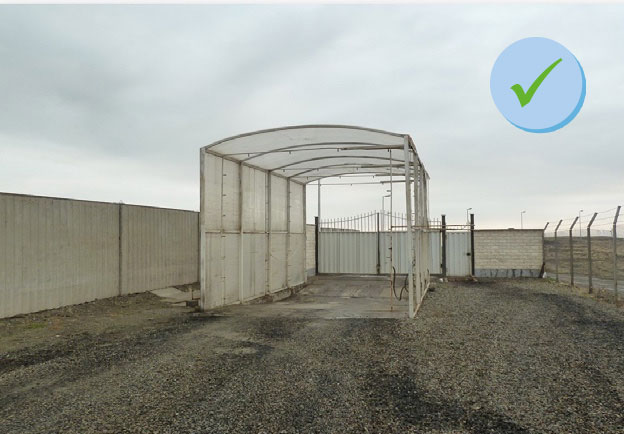
Visitor register
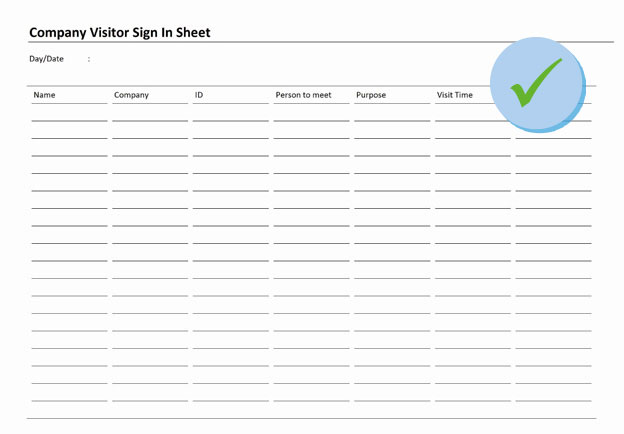
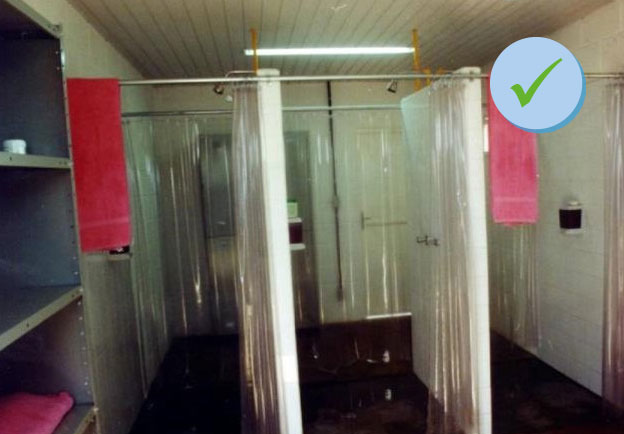
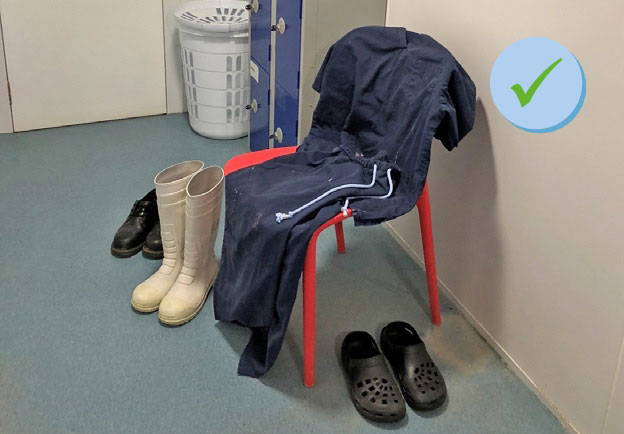
Farm clothes and shoes
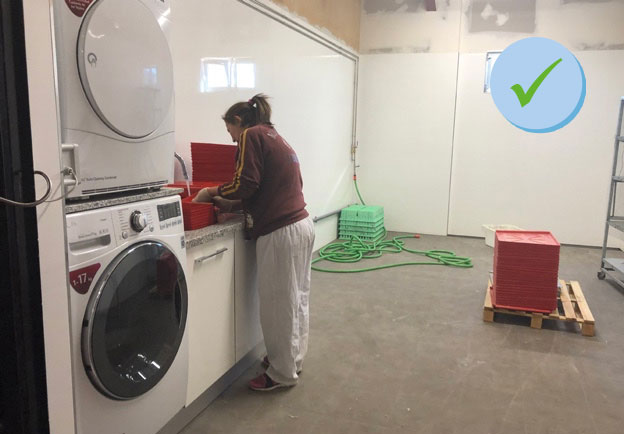
On farm washing machine and clothes dryer
The flock health status will be severely
damaged in the event of infestations of rats or mice.
Passive measures:
Active measures:
It is very important to exclude other birds
from entering hen houses. Bird-proof houses can be constructed using special netting.
Bird’s faeces are also very infectious
material. Direct or indirect contact should
be completely avoided.
Establish an insecticide program.
Manure management is also very important to prevent flies.
Mites can be very damaging to the hens overall health status. This is particularly the case with Red Mite and Northern Fowl Mite.
See its control in the Technical Tips.

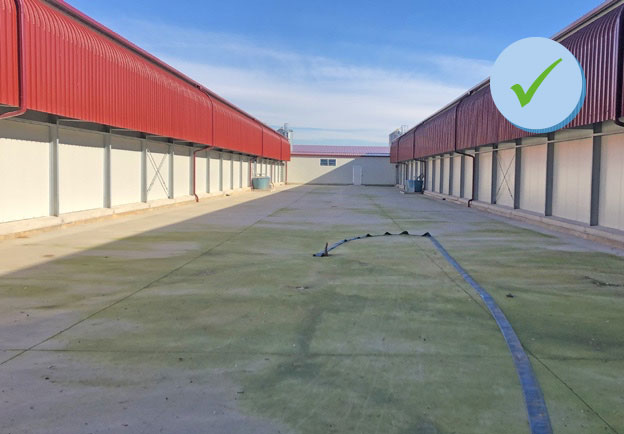
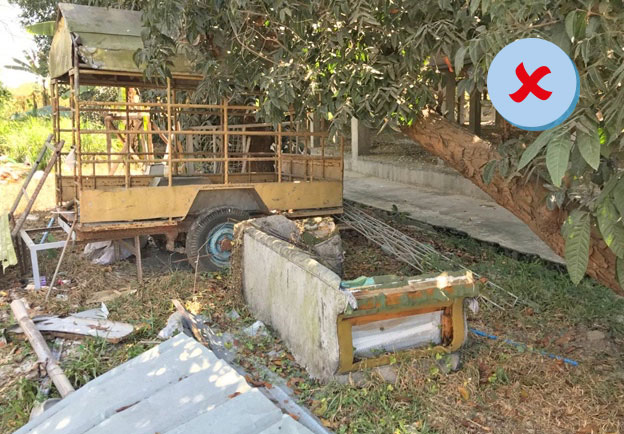
Information, meetings and training days should be provided to staff and other people working on the farm to ensure that they understand, respect and collaborate in the biosecurity program.
It is also very important to ensure staff do not raise poultry at home or come into contact with other birds (pigeons, hawks, ducks, …).

The quality of raw materials and hygiene measures at the feed mill are vital to produce pathogen-free feed. Adding disinfectants is also recommended. Feed transport and feed storage should be controlled to avoid contamination after feed mill delivery.
Chlorine or an alternative disinfectant should be added to drinking water. It has a dual purpose: firstly preventing the introduction of pathogens by water and secondly reducing water recontamination while it is in the house pipeline.
Waste removal and disposal is critical because waste material can be heavily contaminated.

Manure should be removed and disposed of at least 3 km away from the site. Make sure that no other farms dispose of their manure within a 3 km radius of your farm.
Dead birds container
Dead birds should be removed from houses on a daily basis and stored away from the poultry houses.
Different methods are available to destroy the dead birds hygienically. If dead birds are moved from the farm, take extreme care during transport:
If a severe infestation of mites or other parasites has occurred, take extra precautionary measures to eliminate or exclude the presence
of pests.
In order to achieve this, the breeder flock should remain disease-free.
Sampling and analysis should be encouraged to check that one-day old chicks are not contaminated.
H&N grandparent stock are free of lymphoid leukosis, Mycoplasma gallisepticum, Mycoplasma synoviae, Salmonella pullorum, Salmonella gallinarum, Sallmonella enteritidis, Salmonella thyphimurium and other Salmonella species.
Take into account that transport crates, trucks and other equipment can be infected with pathogens or infested with parasites.
Previous cleaning and disinfection of all of them is strongly recommended.
Specific recommendations for individual farms are not possible, but the sample vaccination program (table 32) is intended as a very general guideline for vaccinations which are needed on most farms worldwide. Additional vaccinations for coccidiosis, Escherichia coli, Avian Influenza and the variant strains of other disease-causing agents may also be needed. These decisions, however, need to be made on a farm-by-farm basis after careful consideration of the risk factors involved which include, but are not limited to: previous exposure, geographic location, vaccination and exposure of neighboring flocks, state regulations and endemic disease-causing factors. Ask for an adapted vaccine program from your local veterinarian.
Administering the vaccines in practice is just as important as the vaccine program design.
All this involves is simply following a procedure that is clearly defined by the vaccine manufacturer. However, mistakes are still often made. To avoid errors, check and audit these procedures regularly. Proper vaccination is essential for a good health status.


Eye drop

Injection

Wing inoculation

Serological data obtained after the bulk of the vaccination program is completed, normally by 15 or 16 weeks of age is a good method for evaluating the immune status of a flock of pullets prior to production.
Such data also serves as an immune status baseline for determining whether a field infection has occurred when production drops are observed.
It is recommended that the flock owner submits 25 good serum samples to a laboratory one or two weeks prior to the pullets being placed in the laying house to establish freedom from certain diseases such as Mycoplasma gallisepticum (Mg) and Mycoplasma synoviae (Ms) prior to onset of production.
Serological data can give valuable information on the immune titer levels for a number of disease-causing agents.
Working with a poultry laboratory to set up a profiling system will make better evaluations of vaccination programs and flock conditions possible.
Welcome! Your admission is granted, please allow for 2 seconds as the door to our VIP room is opening for you right now! Please come in!
Don't have an account? Sign up now
